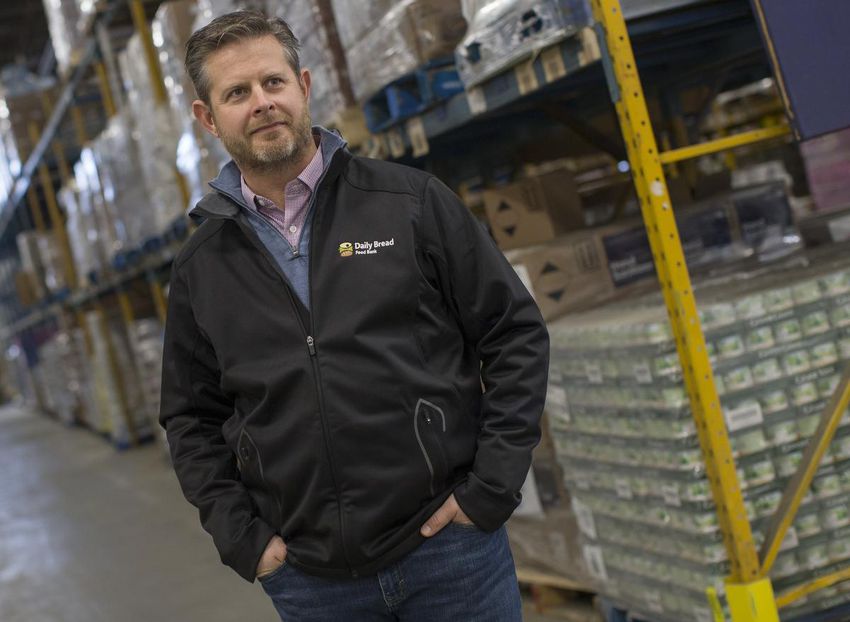The pandemic has had a devastating impact on hunger in the city and more people than ever depend on food banks to survive, according to a report by two local food charities.
Most concerning, the report indicates that the worst may be yet to come as COVID-19 welfare programs are phased out.
In the past year, Toronto food banks reported 1.45 million visits, a 45 percent increase from 2020 and 1.5 times the previous record set in the wake of the 2008 financial crisis. In addition , new food bank customers were up 61% year-on-year, and now outnumber existing customers for the first time, according to the “Who’s Hungry” report from Daily Bread Food Bank and North York Harvest Food Bank.
“Most concerning is that while this year was a record year, with a dramatic increase in visits to the food bank, the numbers continue to slowly increase,” said Neil Hetherington, CEO of Daily Bread in Etobicoke.
“It is a very difficult report and sadly an even more difficult prospect,” he said of the city’s annual hunger profile to be released on Monday. “These results go to March 31 and we reached another high in June. We are in the worst case: an increasing number of people who need food charity to survive ”.
Hetherington said the end of Ontario’s eviction ban, as well as the federal government’s Canada Recovery Benefit (CRB), rent and wage subsidies, are crushing many people whose incomes are still in jeopardy as a result of the pandemic.
“Food bank customers continue to face significant financial challenges as a result of the pandemic,” Ryan Noble, CEO of North York Harvest, said in a statement. The report found that one in three customers surveyed had to stop eating for an entire day in the past year. For more than half of them, this happened almost every month.
The end of support programs also affects people who did not qualify but who nevertheless relied on financial support from those receiving benefits. “The ending of those programs also means that people’s ability to borrow from friends or family is also running out,” Hetherington said.
But even while they were active, the government’s financial aid programs did not do enough to protect Torontonians from food insecurity, he added.
“We anticipate that government interventions would have a more positive effect,” he said, referring to the fact last year’s food bank usage report underestimated how bad things would get in 2021.
“Those positive effects were eliminated by rising inflation, particularly the rise in food prices.”
Hetherington said Toronto residents did not have the proper social programs needed to weather rapid economic turmoil, such as the disruption caused by COVID-19. He is sure that more “acute shocks” are coming and said that all levels of government must be diligent in creating a system that ensures that people have the financial resilience to survive.
“Do we know that everyone in Toronto has access to decent and affordable housing? No. Does everyone in Toronto have access to a decent job? Absolutely not, it is precarious, ”he said. “People are arranging two or three jobs to make ends meet, by contract, with no benefits. And we’ve been talking for a long time about the significant challenges facing any person with a disability: the funds that people get for disability are not enough to survive. “
Addressing those issues, in addition to providing universal dental, child and pharmaceutical care, would have kept hundreds of thousands out of food banks, Hetherington said. The report calls for the implementation of a “poverty reduction strategy” at all three levels of government, including rental assistance, expanded employment insurance and increases in affordable housing construction.
“What’s absolutely terrifying about this report is that when someone (who uses a food bank) finishes paying for their housing, on average they have $ 9.17 left to pay for food, transportation, and other basic necessities (per day).” Hetherington said. “Even scarier is that within the BIPOC community, that number is $ 6.67.”
While food charities help a lot, they are nowhere near a solution to food insecurity on their own. Daily Bread can only provide people with enough food to feed their families for three days a week. The remaining four days of meals must be paid for out of pocket. That is impossible with less than $ 10 per day.
“This has been the most difficult year for people who need Daily Bread,” Hetherington said, adding that the charity was often “strained” by unprecedented demand.
“When the pandemic started, we got engaged,” he said. “We said, no matter how many people come to the food bank, we will make sure the food is there for them. We have and will continue to deliver on that promise.
“I am very proud of the volunteers and staff working alongside us, who rose to the occasion like no other year.”
Sarah Oakley began volunteering at Daily Bread just months before the pandemic began. He said he was always aware of the disparity in access to food in the city and wanted to help close the gap.
The growing need for food banks brought on by the pandemic meant Oakley and his fellow volunteers had to work overtime to meet the needs of the neighborhood.
“We would stay up late to make sure the orders were fulfilled and put on the trucks the next day,” he said. “It was hard work. Working in a food bank can be very hard work. It was all hands-on during the first months of COVID.”
Reference-www.thestar.com

